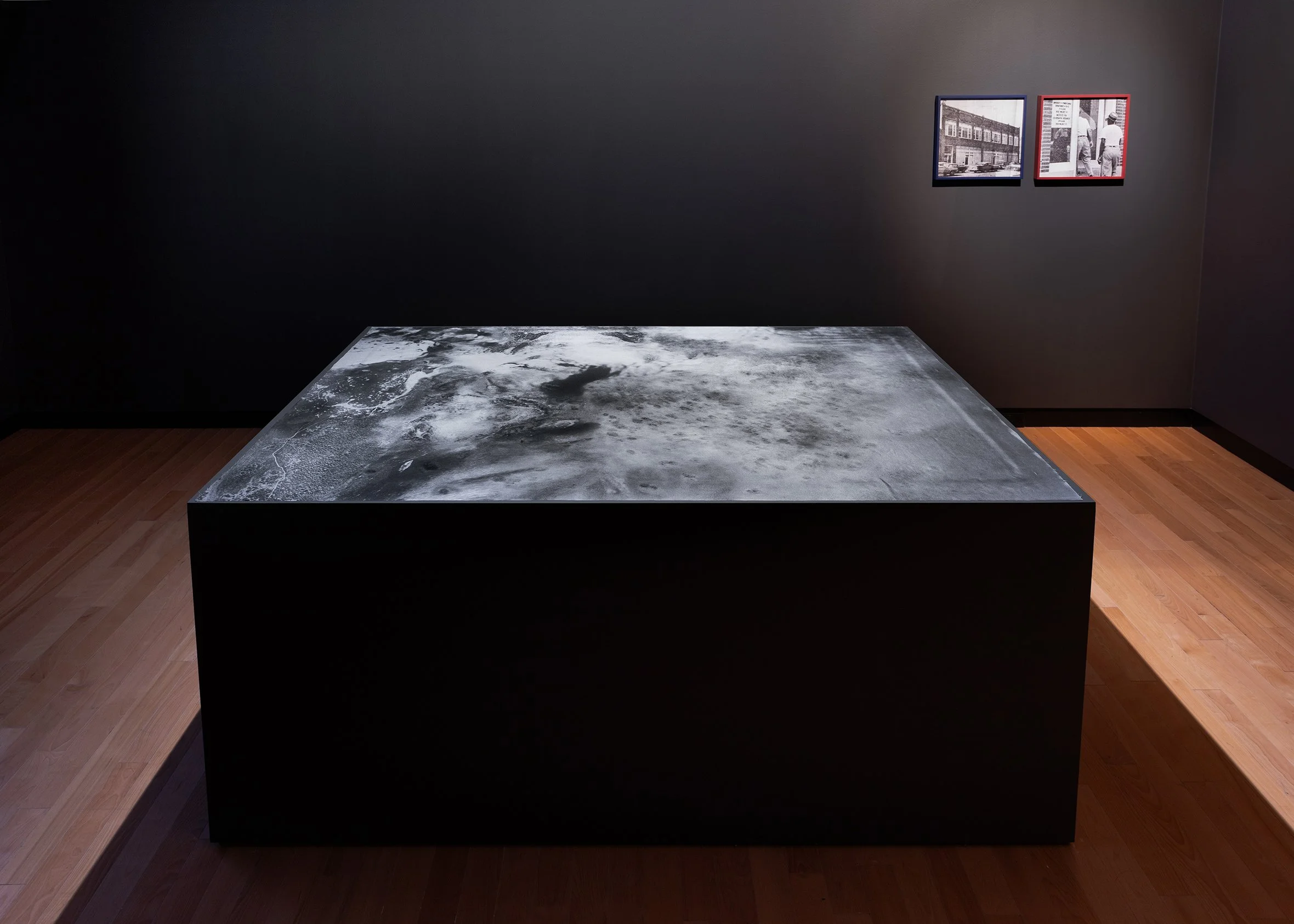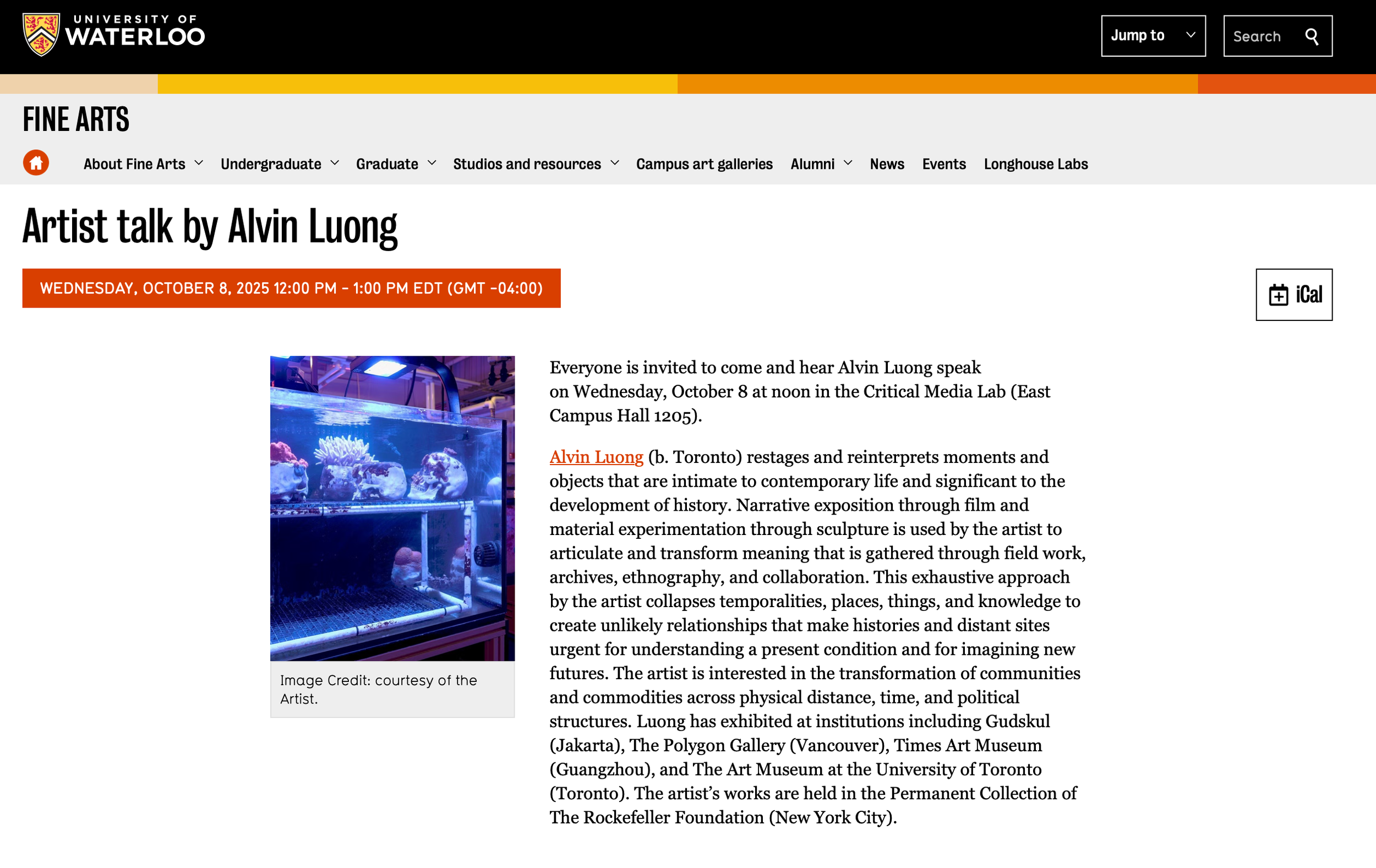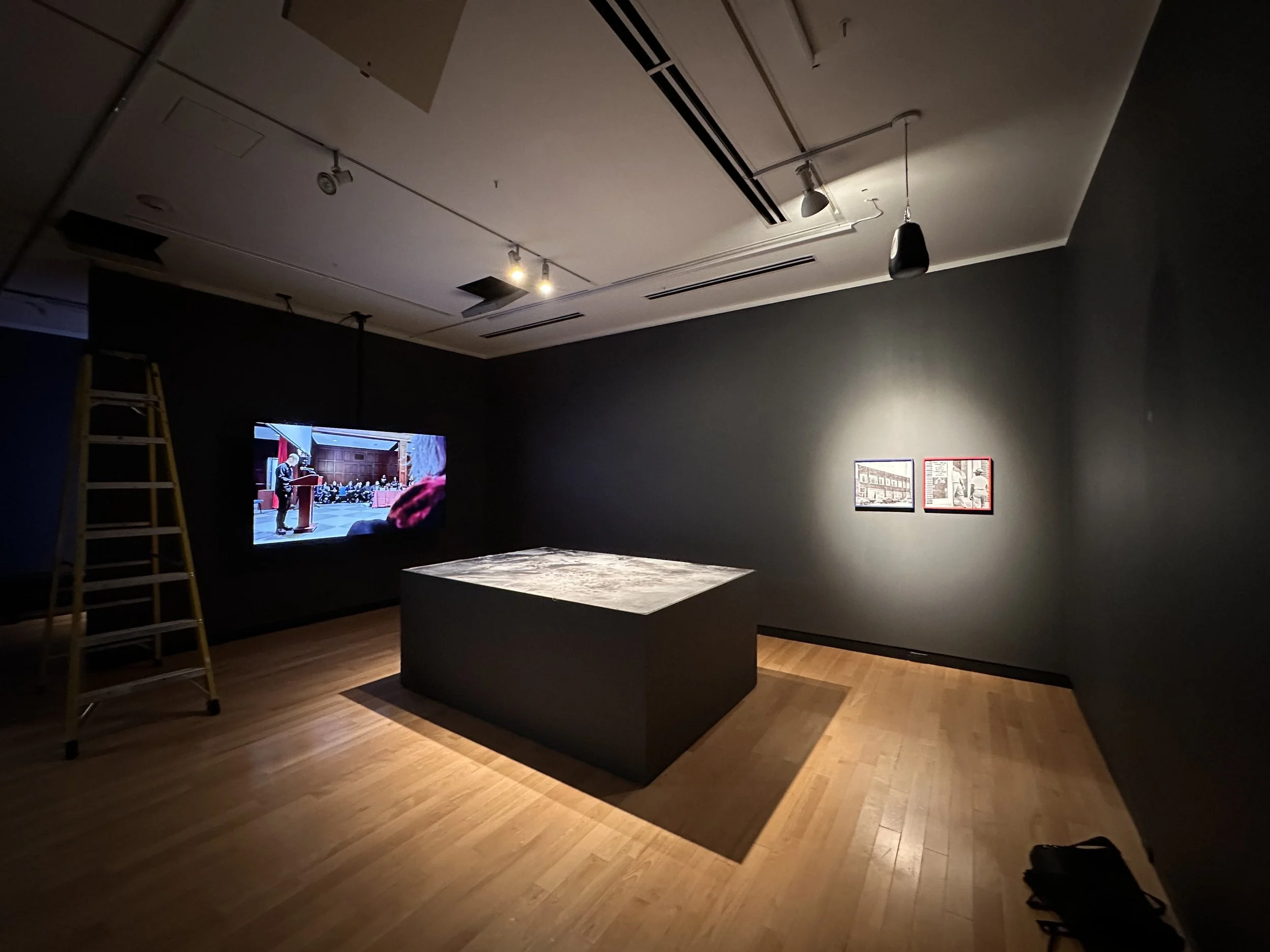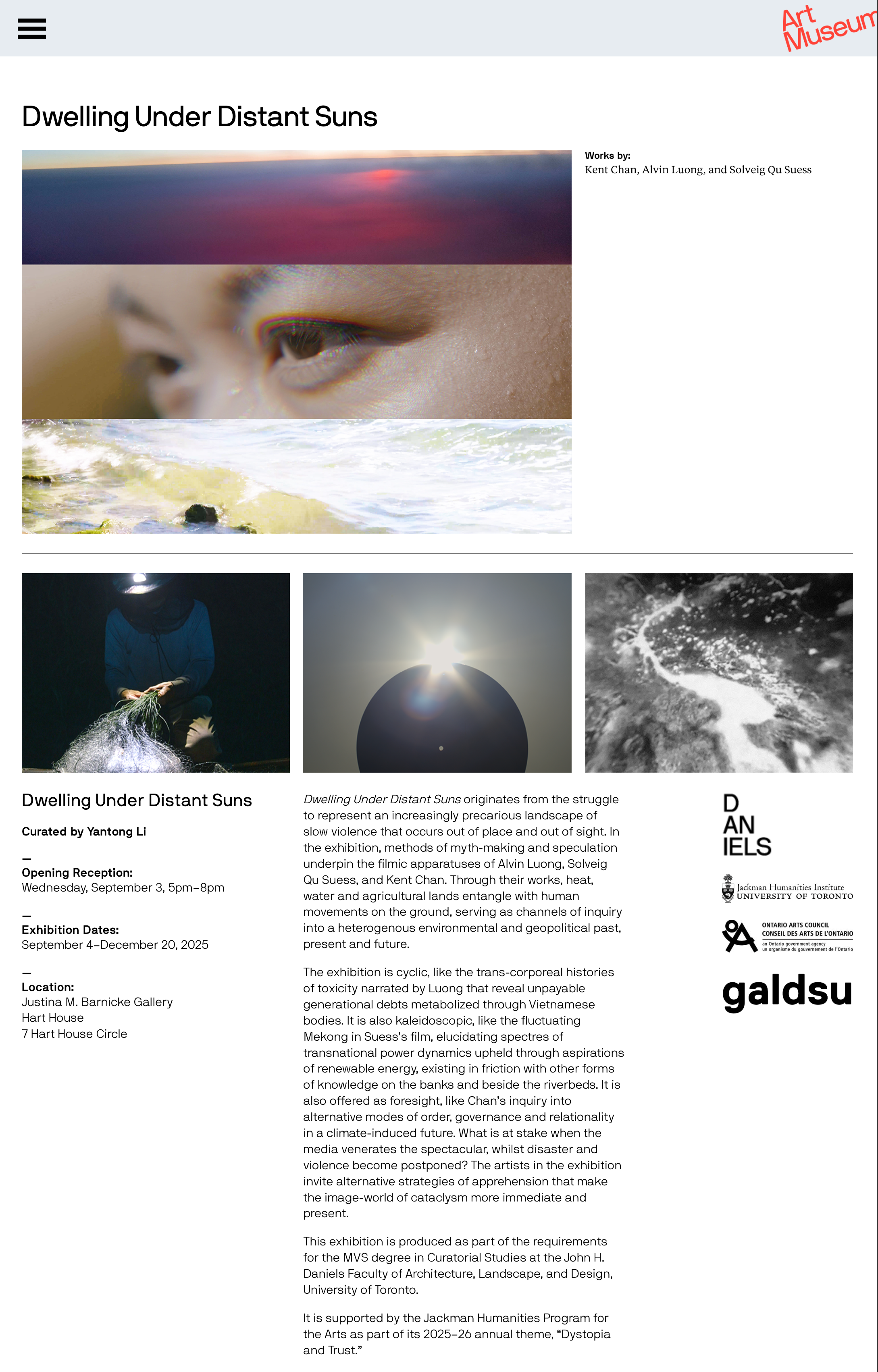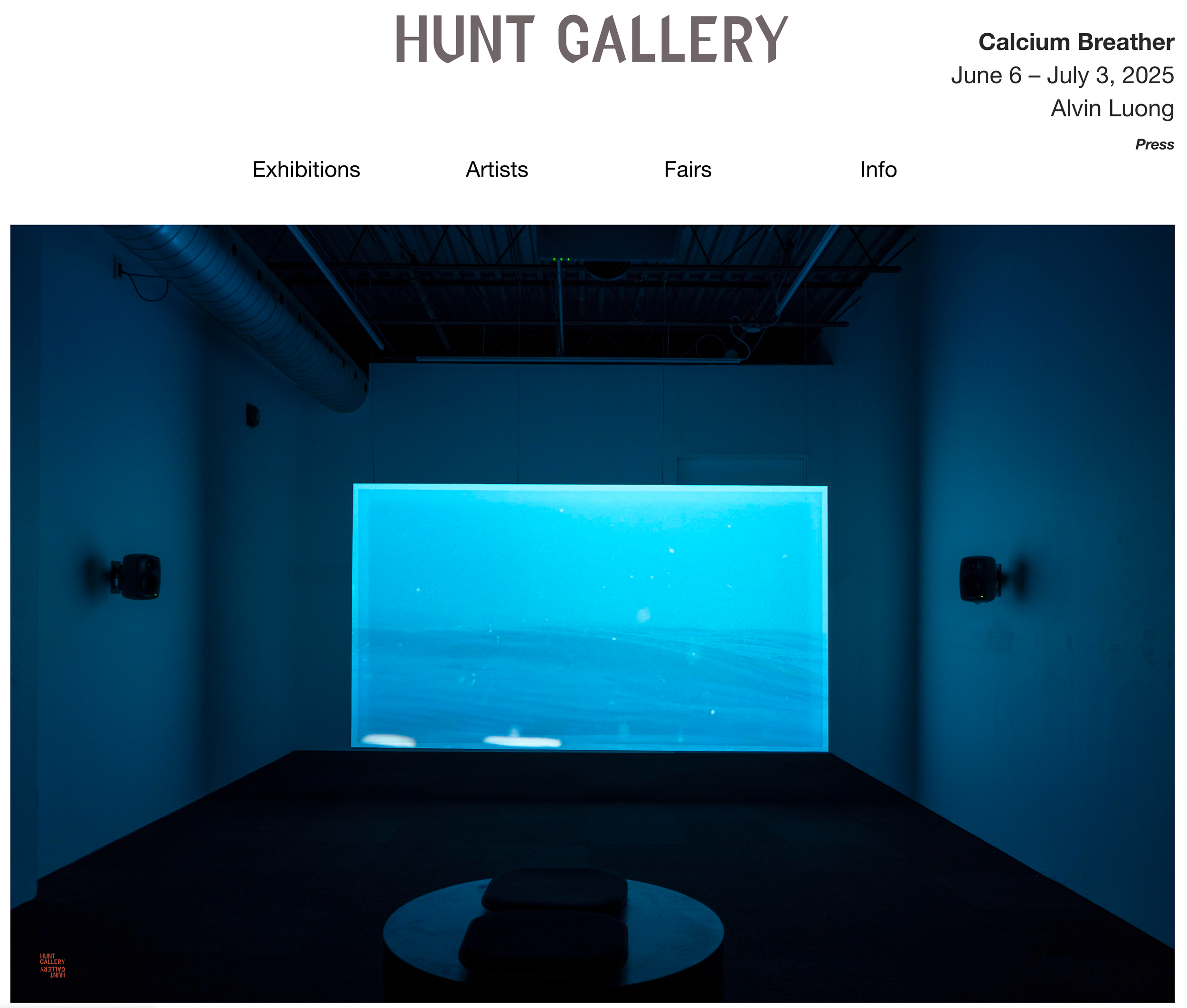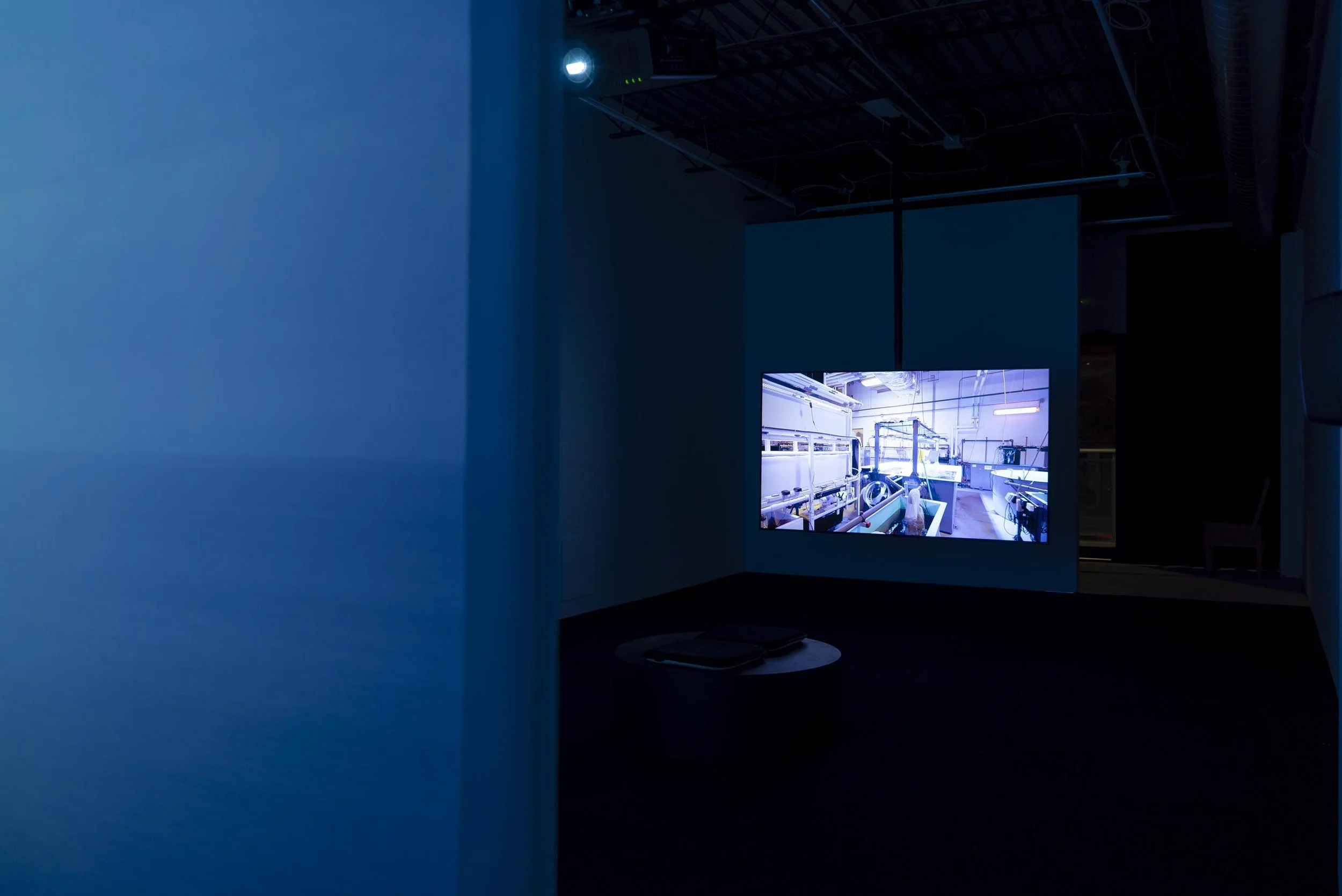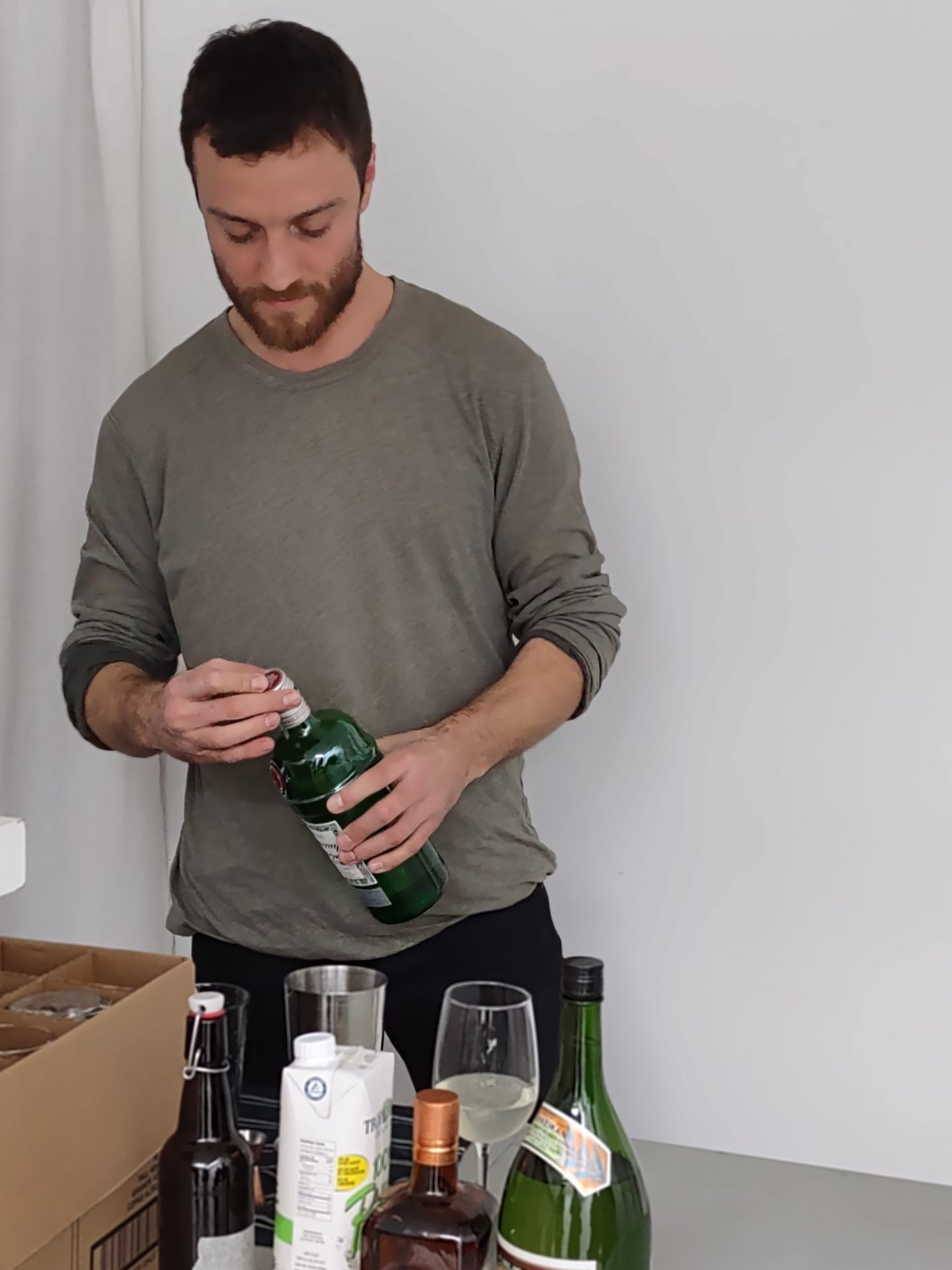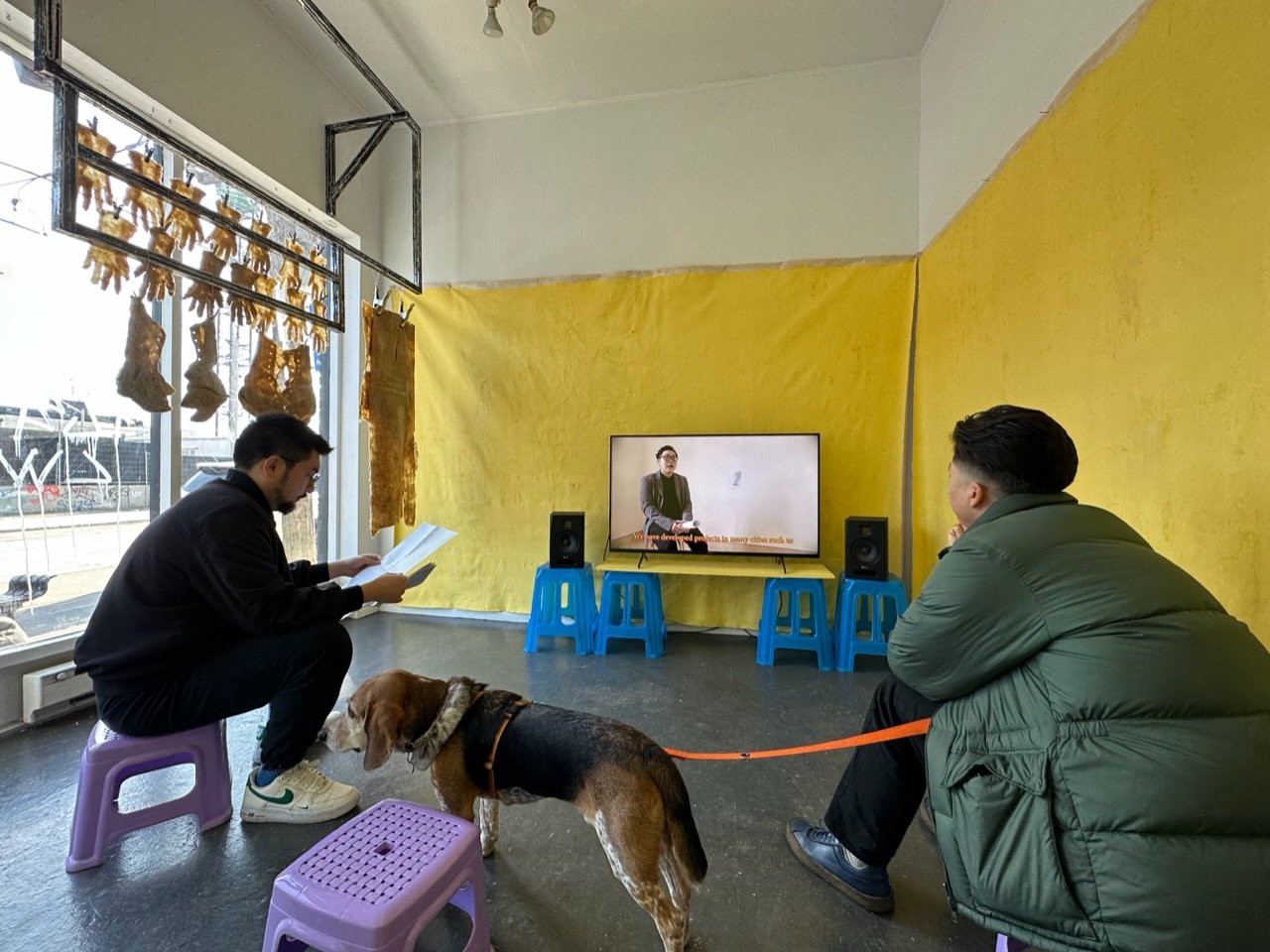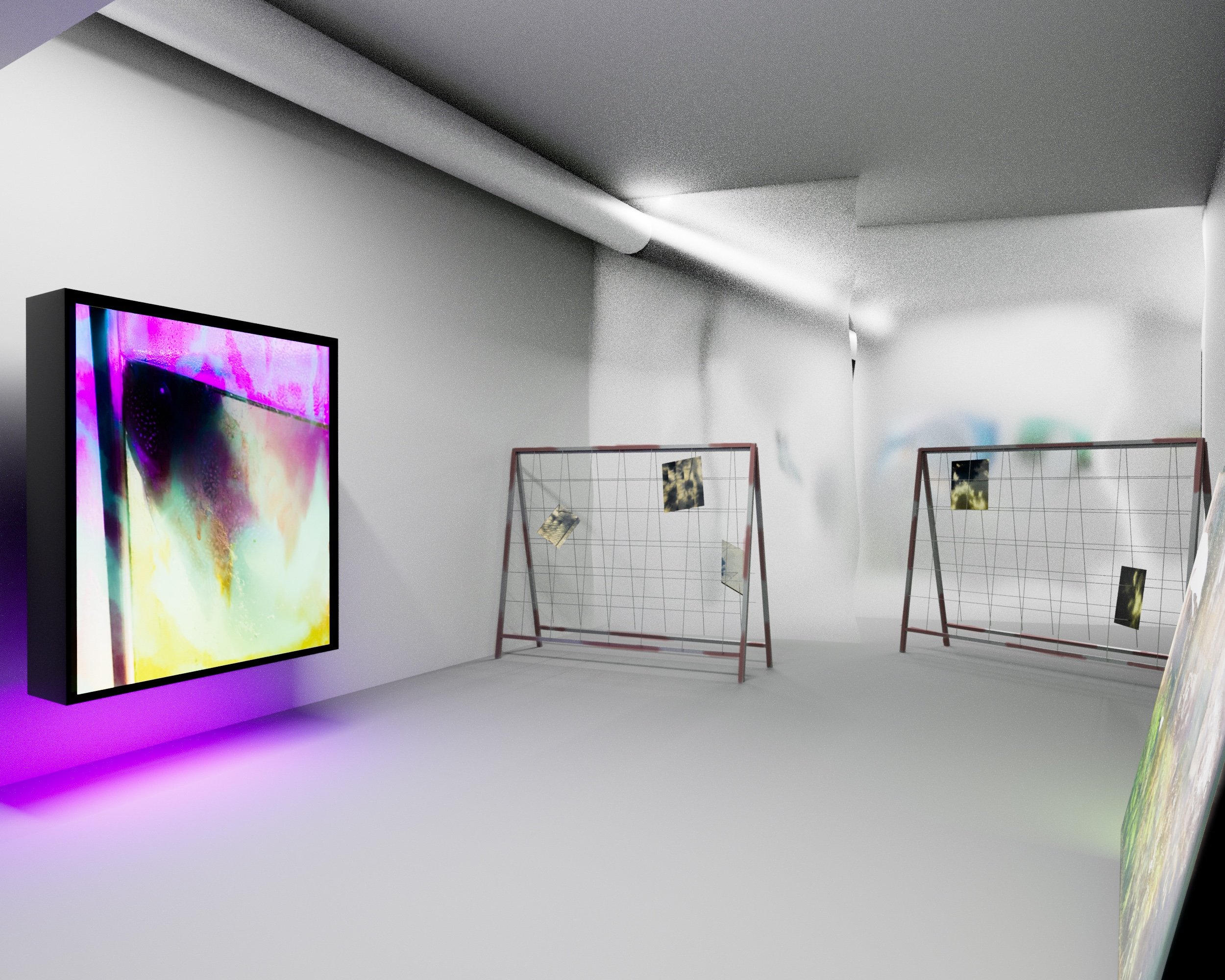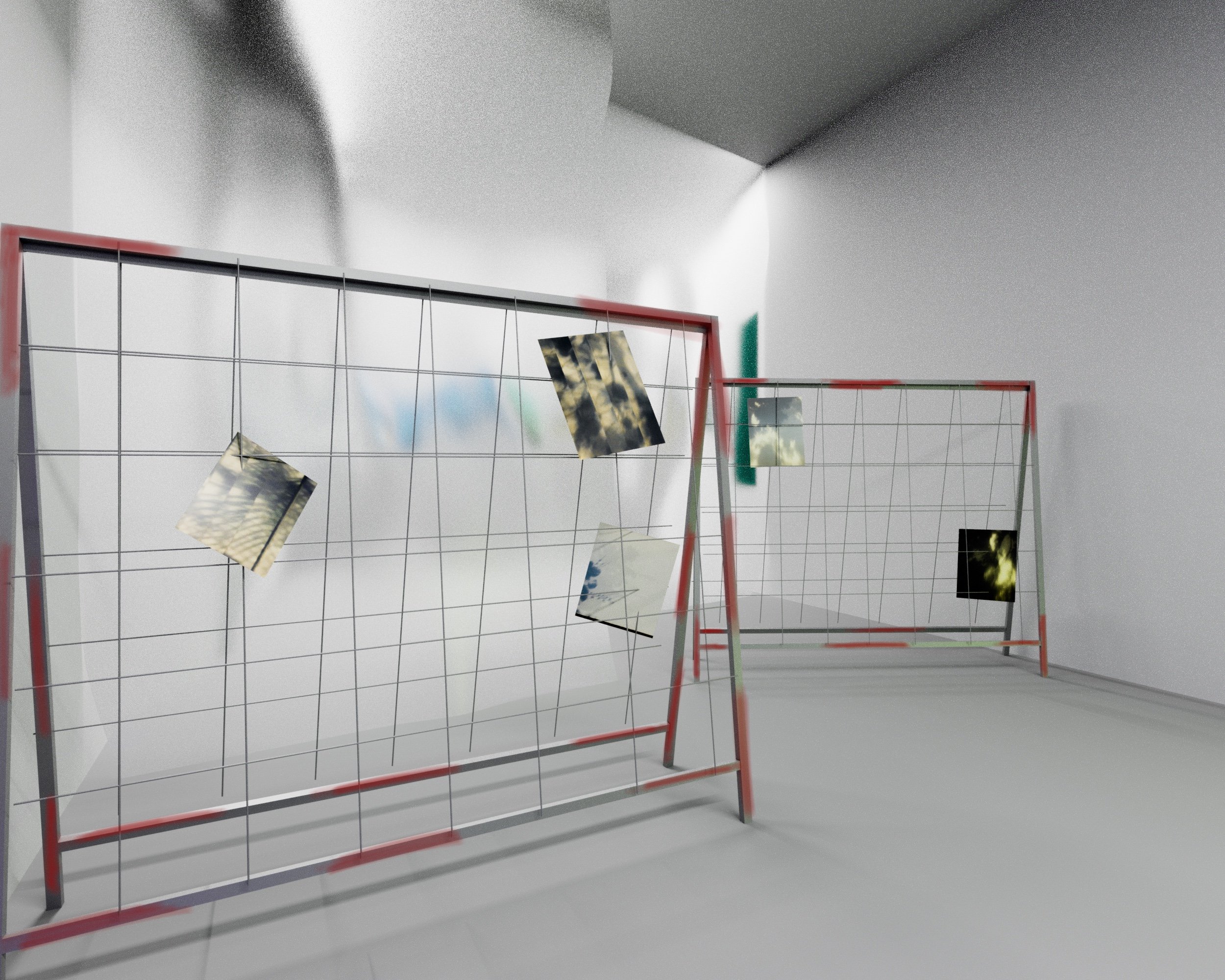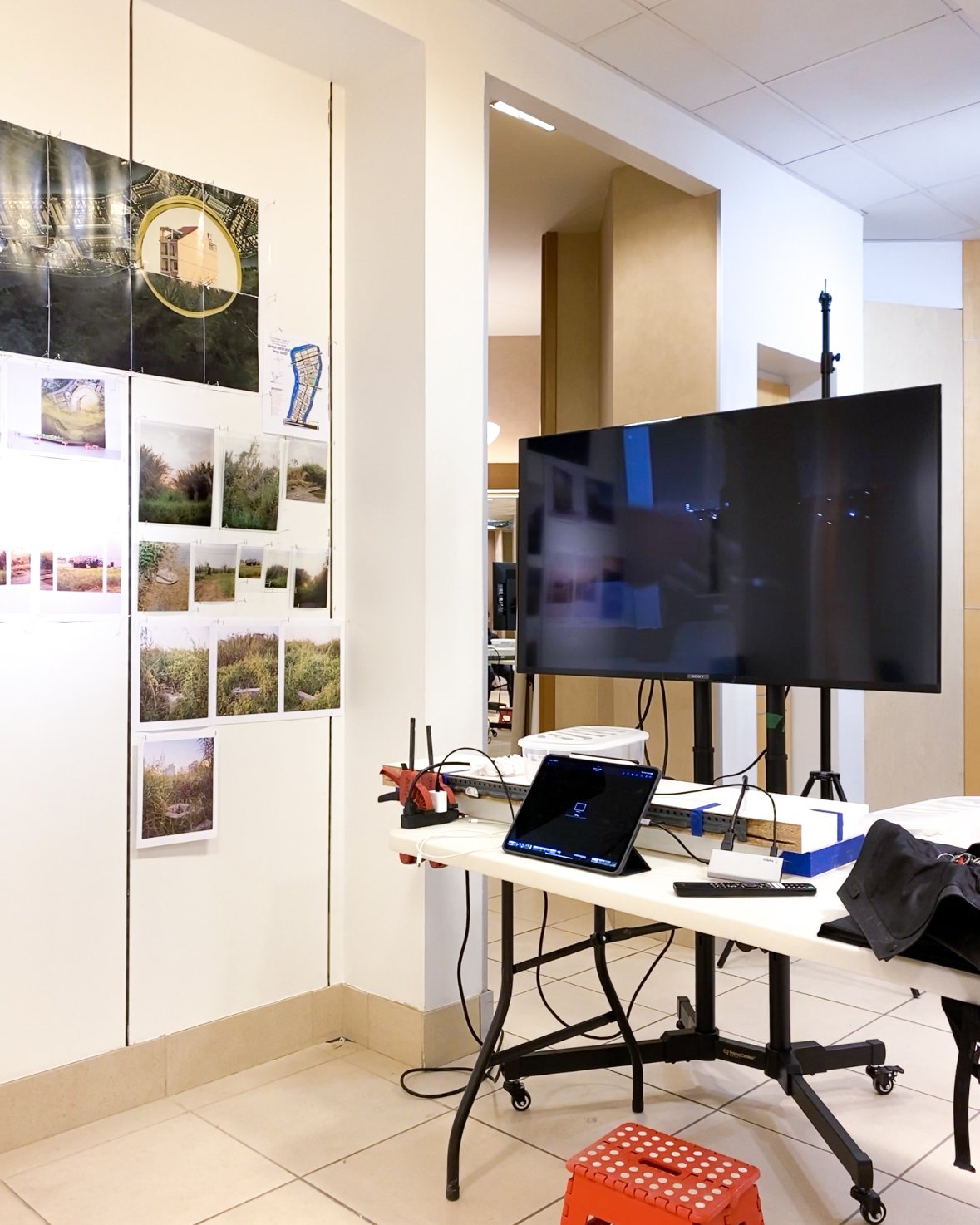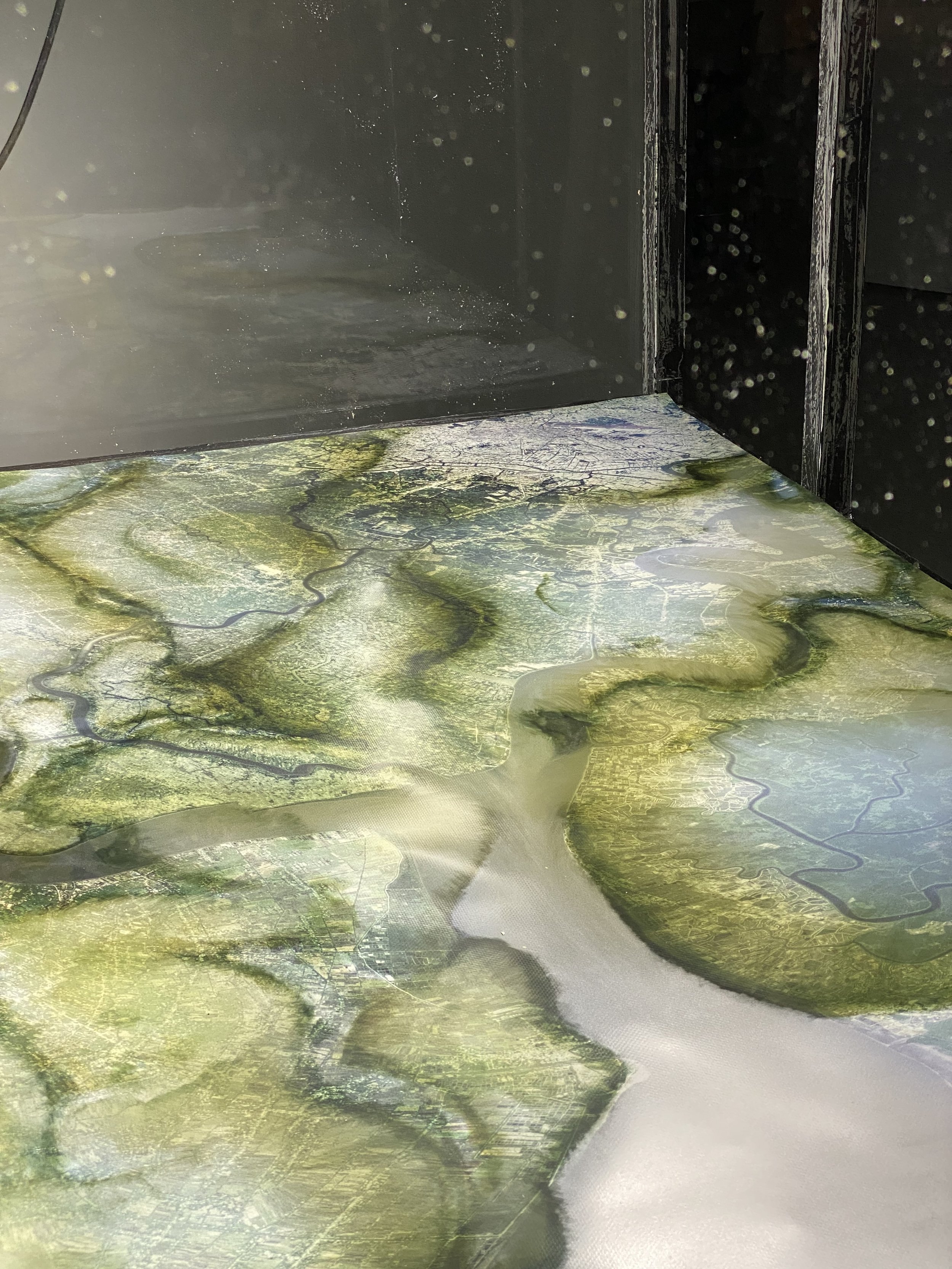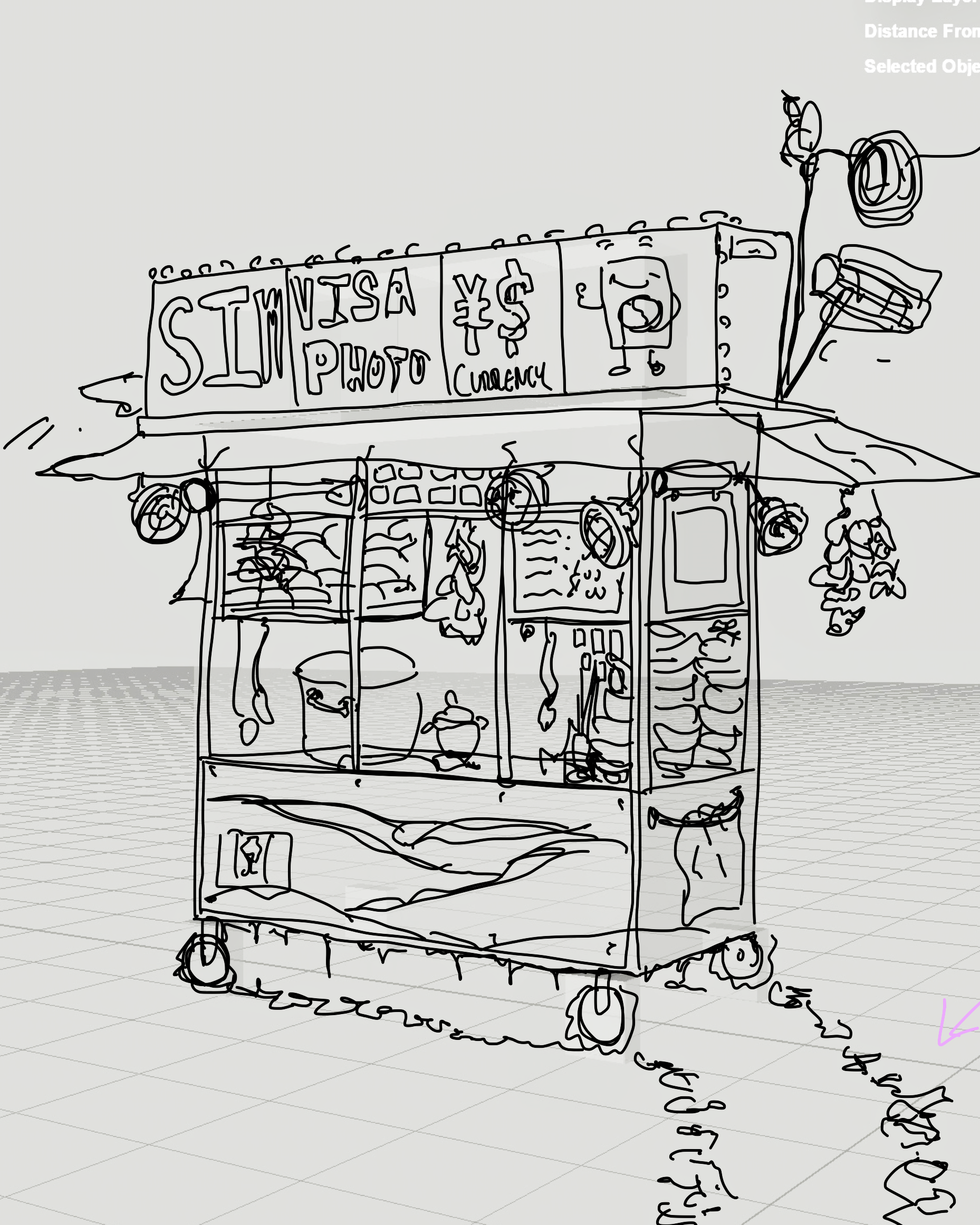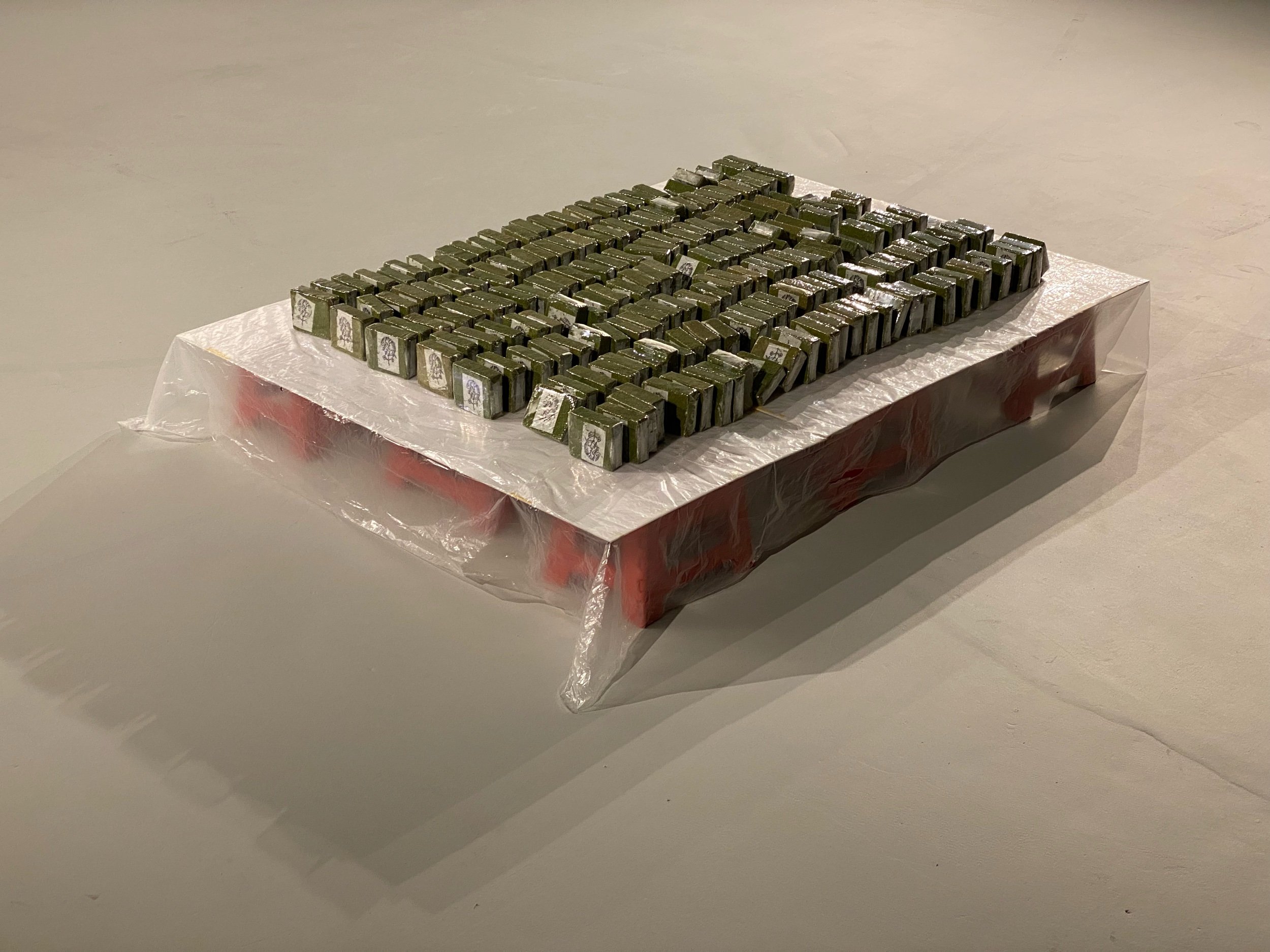Talk at University of Waterloo - October 08, 2025
https://uwaterloo.ca/fine-arts/events/artist-talk-alvin-luong
The talk at University of Waterloo occurs on October 8, 2025 at 12:00PM in the Critical Media Lab( 263 Phillip Street Waterloo, ON, CA N2L 3G)
Endowment (2024) and Cyanide Debt (2025) exhibiting at Art Museum, University of Toronto
https://artmuseum.utoronto.ca/exhibition/dwelling-under-distant-suns/
Two projects are being exhibited in the exhibition “Dwelling Under Distant Suns” curated by Simon Yantong Li. The exhibition runs from September 4 to December 20, 2025.
Endowment (2024) and its accompanying words will be exhibited to the public for the first time at the Art Museum at the University of Toronto. I am curious about how this work, made at Penn and in the wake of tumultuous student protest and its university repression, can find resonance at the University of Toronto (UofT). UofT also experienced student and faculty protests in 2023/2024 but to a different extent and its context different than the United States and its political administrative changes. Cyanide Debt (2025) was commissioned by the curator Simon Yantong Li. The video work was filmed on March 2025 when Penn students went to Bangkok and Chiang Mai for field work and research in the two cities.
Calcium Breather at Hunt Gallery in Toronto
https://huntgallery.info/Calcium-Breather-final
Calcium Breather a solo exhibition at Hunt Gallery in Toronto, runs from June 06 to July 03, 2025.
With great resolve, the exhibition brought together two anchoring artworks from my time at Penn, the video Corals of Bidong and Camp Atlanta.
Revisiting Bidong in 2024
In June 2024, I revisited Bidong Island on two separate occasions to continue my work on island and below the sea of the island.
The first of these visits came through the invitation of Dr. Hafiz Borkhanuddin, Director of Marine Biology at University Malaysia Terengganu. I joined Dr. Borkhanuddin and his Masters students on their monthly research dives to examine the state of the marine ecosystem on the sea bed around Bidong. This was a long and exhaustive day under the heavy sun of an exceptionally hot Terengganu summer. According to Dr. Hafiz, the intense heat of June had brought with it a heavy bleaching event upon the corals. A widespread series of deaths hit many species of corals some the size of a hand to some the size of a two sedans.
Joining the team for such a long and focused day that extended into the evening for debriefing, transformed my relationship to Bidong. I had begun this relationship through my own one-way projection upon the island based on its traumatic history. I expected for the island to have a psychological burden, a deep sombreness and sorrow. Having experienced a full working day by people who treat the island as a part of their livelihoods and their deep research interests, I now have a more realistic relationship to Bidong. This was certainly the case as I observed the joy and satisfaction of the marine biology students as they undertook their dives. I felt at ease, although in seasickness, as I laid on our boat for a quick nap. This insignificant leisure activity was deeply freeing, I felt I could work with the island now on my own terms and at a casual cadence.
The second visit this summer was joined by a local guide, Darius, who I had met the previous year when I had first travelled to Bidong. We recounted our steps and inspected how the Terengganu State Museum had cleared parts of the dense forest of the island to create a foot path that traces the trail where different refugee camp facilities and lodgings were formerly located in Bidong. These locations are marked with new signposts, and included language schools, cooking facilities, aid stations, and even an art school. Clouds of mosquitos swarmed us as we moved through rough footpath trying to evade red ants.
The primary beach of Bidong where an accessible jetty is located, is now undergoing the construction of concrete wave walls to reduce the burden of the sea on the beach. I wonder how this new environmental engineering of the island will impact its ecosystem and how people may relate to its history of the island. The natural gradation of the beach is being erased by a concrete cliff. On this second excursion to Bidong I had taken the same boat that I had last year and from my first visit this summer with the marine biologists. The boat was also captained by the same person, Toro.
On graduate School: UPenn MFA Year 1
Reflecting on the conclusion of my first year in the MFA program at UPenn, I found it challenging to adjust to the cadence of school. In a context of speed that yields the rapid prototyping of ideas, forms, and materials, it was a struggle to present work that may have already contained outdated or vestigial ideas by the time a critique or review session occurred. But it was also edifying to understand what elements are continuous as a work develops and what elements become vestigial, becoming clunky or unnecessary, as development occurs.
This year, I built upon my initial encounter with Bidong island in the summer of 2023, before school had started. At the beginning of school, I had created sketches and plans for sculptures that attempted to articulate being on the island, however, by the end of this school year, I had created work about being around or in distance to the island, in both psychic, physical and temporal terms. To encircle the island rather than be upon it.
I created sculptures comprised of salt in the form of a pair of Yamaha 150 outboard motors that powered my journey to Bidong from the shores of Malaysia. These sculptures degrade over time as they collect ambient moisture from the air and from water vapour that is piped into them. A process that parallels salt water corrosion from the sea, except now with fresh water.
Renée van der Avoird's review of the debut of "Mystery of the Twisted Fantasy" in C Magazine
Renée van der Avoird is part of the Spring 2024 issue of C Magazine.
Mystery of the Twisted Fantasy was commissioned for the exhibition Shoaling by curator Lillian O'Brien Davis as part of the 2023 Nuit Blanche in Toronto.
Yantong Li's review of "After the Cataclysm, Before the Storm"
https://www.peripheralreview.com/bullets-and-gush-after-cataclysm-before-the-storm/
To Bidong
On 16 June 16, I visited Pulau Bidong, an island that my father and several thousands of Vietnamese refugees had lived on during the Vietnamese refugee crisis during and following the War. The journey took three days, with flights to Kuala Lumpur, Kuala Terengganu, and then a chartered ferry to Bidong. I was able to make this trip happen thanks to Centre A and its former Director, Henry Heng Lu, who invited me to conduct a research trip.
The island is indeed a saddening place however when I was there I didn’t feel this sadness. Rather, as an artist, I found Bidong to be exciting and edifying. It filled empty boxes in my understanding of self and exposed me to many materials and textures that convey history.
Ration Eater and the closing of a chapter
My Ration Market project took on a new development in its Ration Eater iteration. The artwork was presented at The Plumb in a show curated by Callum Schuster, called “On a Table, Over Time”.
Ration Eater features a sculpture as well as a tasting event wherein guests can eat an actual bowl of the rau muong/ river spinach-ration congee that was advertised for sale in my Ration Market Special sculpture. The food that was served is a simple congee made with salt, water, and jasmine rice, that is then topped by a slurry of blended rau muong and then garnished with fried shallots. For me, the work was a way to bring the fiction of Ration Market further into life. At the tasting event, guests were encouraged to bring their own bowl and spoon, which for me as an artist, generates a mise-en-scene of a provisional sharing canteen.
The event for Ration Eater was brilliantly accompanied by the curator of the show, Callum, who prepared a cocktail revolving around the Vietnamese herb, Rice Paddy Herb/Ngo Om. An herb that came over to the Americas through the arrival of refugees from Vietnam. Callum had concentrated the rice paddy herb into a simple syrup paired with coconut water, Cointreau, Tanqueray, among other ingredients.
It was my first “relational work”, an activity that brought an intimate depth to the Ration Market project.
The event seemed like a fitting way to mark what feels like the closing of a chapter, with the openings of my three-years-in-making project, After the Cataclysm, Before the Storm, and my show of photographs and computer manufactured images in Destiny Is Not A Good Friend at Hunt Gallery. This period between March and April distills everything that I’ve been working on for three years—when I returned to Toronto in January 2020 after half a year working in Guangzhou, Jakarta, and Ho Chi Minh City, right before the pandemic.
It was a period of breakthrough development, I lived with the folks from HB Station / SJT / Boloho / Fong Fo and Gudskul / Serum / ruangrupa in the lead-up to their Documenta projects which in hindsight, imparted upon me a deep sensitivity to the spatial, political, material characteristics of the places around me. It untethered me from thinking about art production within silos, and to pay attention to the vernacular of culture (in the Bourdieu-sense) around me. To make art that may look less like art and more like the things around its means of production. This I believe, is a path towards continued experimentation.
Plans HG 1.0
New exhibition plans at HG in April. Thinking about climate control, labour militarism, and the manufacturing of PlayStations.
New and old works made between 2020 and 2023 in HK, Saigon, and Toronto.
Tunnel Rats and Sewer Holes (Hole Story Sketch)
Some video tests using cheap xerox prints and diptych strategies to combine images of “tunnel rats” and exposed sewage holes around my family home on the outskirts of Ho Chi Minh City. “Tunnel Rats” were often shorter American troops who crawled thru underground tunnel systems in search of Vietnamese guerrillas who built the tunnels to evade aerial assaults. The sewage holes are a result of a contemporary botched real estate development on land that formally trained guerrillas to fight the French and American colonizers.
Ration Eater 2.0
Ration Eater 2.0 is a make shift dining piece for live tastings of the foods produced with my survival rations.
State of the Studio
The studio for the past two years has been going exceptionally well.
Through some help from my friends and the funding from the Ontario Arts Council’s Career Catalyst Grant, I’ve been able to build movable walls and acquire a colour-accurate monitor and mobile stand. This set-up has been phenomenal for studio visits as I reconfigure the space depending on my needs. Through the monitor and mobile TV stand, I’ve been able to display my video works, video editing-process, and digital research along with physical sculptures and wall works. The scale of the screen really gives a materiality and presence to screen-based works that would otherwise be blandly viewed on a small computer screen or phone.
A very big thank you and my acknowledgment to the Ontario Arts Council for empowering my studio, which in the past two-ish years has held multiple successful studio visits with writers and curators. Granting me exhibition opportunities and awards. I think a grant like the career catalyst is a perfect fit for emerging artist because it sets an artist up the fundamental tools that they request. It really gets the ball rolling and helps artists work in Ontario which is already a hard thing to do given the cost of living.
Ration Market Special Progress
Overall, it has been a very satisfying time building this new commission. It makes me want to produce more sculptures to fit into my world building practice.
Harvest, A Golden Sickle Is Just For Show
Ration Market Special and Underwater of Vietnam
The universe that my ‘Ration Market’ builds is being extended into a special edition of the project called ‘Ration Market Special’. The title itself is a reference to and follows the grammatical logic of the Vietnamese and Cantonese word ‘dac biet/特別’, meaning ‘special’.
The ‘Ration Market’ will be expanded into a food cart that sells the river spinach rations as a prepared meal consisting of a rice porridge with a topping of reconstituted river spinach with a texture similar to spinach in a saag paneer. This food cart will also sell sim cards for different cellphone carriers in Asia Pacific, advertise a currency exchange service for currencies from Asia Pacific, as well as a makeshift booth for producing headshots for visa applications. Overall, ‘Ration Market Special’ is meant to paint a picture of a precarious station providing a quick meal and low-end services for people trying to flee Vietnam, a region that will soon face growing migratory pressures from Sea Level Rise (more of that below). The picture of migration that this artwork builds is not one for the upwardly mobile, who can migrate through official channels and high-end means of travel through flights, but rather one of the working class who may have to seek grey-market goods and human smuggling services to move across borders. It is a picture of low-end globalization in an era climate crisis.
The organization Climate Central provides a very intuitive and easy to comprehend visualization of the current climate models agreed upon by scientists and researchers in the field. Below are visualizations that reference the latest models from IPC2021. We can observe that Vietnam faces tremendous migratory pressures as its largest cities, Hanoi, the political centre in the north of Vietnam, and Ho Chi Minh City, the economic centre in the south of Vietnam, will both be effectively underwater when taking into account Sea Level Rise and the annual floods during the monsoon season. The areas around these sprawling metropolises which include small villages and towns will also be affected. The areas in red are regions that are below the projected flood level by 2050.
More relevant to my personal concerns is the Ho Chi Minh City area and regions to the south of HCMC. Below we can observe how Ho Chi Minh City’s historic quarters, Saigon and most of Cholon, are surrounded by a ring of flooding. Moving out, we can see the entire southern tip of Vietnam is effectively below projected flood levels. This also includes Cần Thơ, a historically important hub where Cantonese diaspora live, and where my grandmother moved to flee from the Japanese invasion of China during WW2. This area also includes Phuong Phu, the land that my video ‘Hole Story’ is about.
Aside from the loss of habitable areas and great cities, another great tragedy comes from the loss of effective agricultural land. When observing satellite images of regions around and south of HCMC, we can see that the land is densely packed with agricultural projects. Below we can see the agricultural lands near the vicinity of HCMC, and then the whole area south of HCMC. A myriad of green polygons can be observed in these satellite images dedicated to farming.
Lastly, we have a simulated fly-over of the southern tip of Vietnam around Ca Mau. In the video there is a simulated rain storm, and the whirring sounds come from the fans of an Nvidia RTX 3090 at full power. The GPU computing a storm sounds like a storm….
Ration Eater v0.3
New developments. This wall work is nearing completion. It is composed of eight signage ‘panels’ that depict a failed housing development in HCMC and a green wash creeping from the sides that contain highly detailed drawings of river spinach.
Ration Market (11.02.2022)
Ration Market (11.02.2022)
200 survival rations made of river spinach/通菜/rau muông, 1 cut plastic sheet, 3 found plexi sheets, 9 red stools.
Moving forward, I’d like to make every installation of the ‘Ration Market’ unique by detailing the materials used to install the work, the amount of rations being installed, and using materials around the site of the installation.
Each iteration of a ‘Ration Market’ should be noted by date and documented. The installation should be provisional and low-end.

